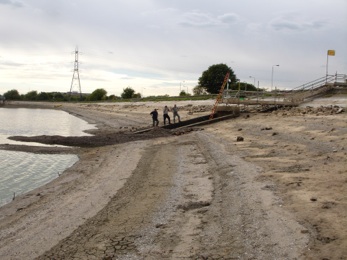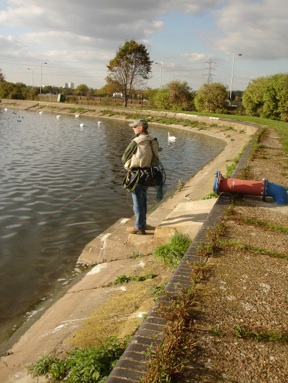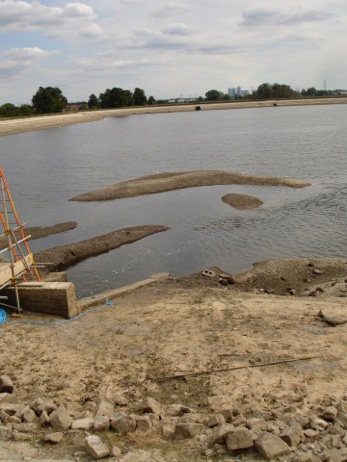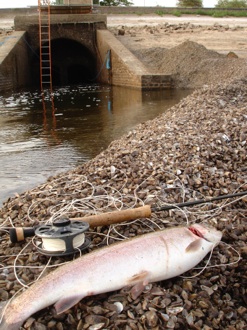Number Four

Railway Bank
This long straight bank can provide good sport casting to moving fish in May-June when a North East or East wind encourages wind-lanes to form. A hedge and fence are a fraction too close for comfort along parts of this bank and long casters should watch their back-cast.
The culvert at the far West end is a favourite spot but doesn’t always justify the attention it often attracts. Renewal of the grille in this culvert now means that at last there is now an effective barrier to trout escaping into the High Maynard reservoir the other side of the Forest Road. No 4 fished a lot more consistently last season; this could well have been a factor.
East Bank
The effects of new pipework in the North East corner have yet to be seen, but are an additional feature to this somewhat overlooked bank.
No problems with back-cast or access along virtually all of this bank would suggest a mobile approach may be best to intercept travelling fish, although the corners at either end are always favourite spots.
Causeway
A collection of pipes connecting No 4 with No 5 at the East end are an obvious hot-spot, especially when South West, South or
South East winds are pushing daphnia through, or attracting fry. Like the Railway Bank, the right winds blowing along this bank can see fish moving upwind, especially in late April to early June. In less favourable conditions, the first third of the bank from the West end is always worth a try.
West Bank
Bays and points give this side plenty of features. The South West Corner can often see moving fish in good conditions for dries, with its North Point often a good spot to cover them. Moving fish can also be seen when a ripple-edge develops out from the section of bank above it.
Not only did dries work well along here during our Wednesday Evening Series last summer, we also saw fry-feeders feature here during the Autumn Series.
The point at the North end of this stretch is another good place to intercept fish, while the North West corner around to the Tower can be a good early season spot, with the corner the other side also worth a few casts before you look further afield.





Just up from the North-West Corner
North-East Corner
West Bank
Steep Slope
Here’s a view of the culvert at the East end of the Railway bank with the levels down. It gives a good idea of the scale and gradient of the bank on Nos 4 & 5. Steeper than that on the East Warwick, it means that even in the height of summer – or the depths of winter - you can still reach deep water with a reasonable throw with an Expert 40+ DI7, or a heavy leaded nymph, 18-24ft leader and floater.
Incidentally, when that picture on the right was snapped, Thames took the opportunity to renew the grille preventing trout escaping into the High Maynard.
Low levels revealed extensive mudbanks in this area, some of them covered in zebra mussel shells. For a brief period it was possible to catch mussel-feeding trout on leaded Hare’s Ears fished Czech-nymph style in the current pushing out from the pipes.



